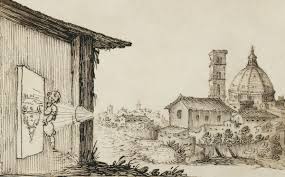Example from Physics: Camera Obscura
We used the rubric-design process to inform changes to a group project assigned in an intro to physics course at UCSC. The project tasked students with designing a camera obscura to capture a scene, and document the process of designing the camera. Using the rubric, we added two components; a warm-up exercise and a question reflecting directly on the experimental design process. These exercises encouraged students to engage more critically in their experimental design process. While they were not assessed with this rubric in mind, the rubric influenced the activity design, and could be used in the future as part of a peer-assessment that would allow students to critique other experimental designs.
Warm-up Exercise
The goal of this warm-up exercise was to help students think about different variables and expected outcomes of their design, and support them in thinking about a hypothesis-driven experimental design:
Read and complete the following prompt before you begin work on your camera obscura. This will help you start to think about experimental design and how you might approach this project.
An experimental hypothesis is used to predict a measurable variable. This measurable variable of a hypothesis (sometimes called a dependent variable) may depend on other variables that can be manipulated experimentally or observed (sometimes called independent variables). A well-designed experiment will:
- test how variation in the dependent variable is associated with variation in the independent variable(s)
- account for variables that could affect either the dependent or independent variables, for example by fixing their values or acknowledging their presence
- be able to provide evidence in support of (or against) the hypothesis.
Choose a hypothesis from below (or one of your own) and briefly design an experiment to test this hypothesis that accounts for the above elements of experimental design. Please reference the instructions above for other considerations and variables to consider. You will need to consider more than just the one hypothesis you address in this warm-up exercise.
- The clarity of the image formed in a camera obscura varies with the size of the pinhole.
- The clarity of the image formed in a camera obscura varies with the distance between the pinhole and the image plane.
- The clarity of the image formed in a camera obscura varies with the shape of the pinhole.
Post-activity Prompt
We wanted to prompt students to detail their experimental design process and discuss components of experiments that are difficult to engage in early on as a scientist. We hoped that the warm-up exercise would stimulate consideration of these components of experimental design and that this prompt would capture key considerations and features of their experimental design, explicitly placing value in this process, whether or not the experiment yielded “good” results.
There are many factors that may affect the quality of your image, for example, the size of the pinhole, the distance between the pinhole and the image plane, and the shape of the pinhole. In addition to the setup you used to capture your final image(s), choose one aspect of your setup and test the hypothesis that variation in this aspect of the setup is associated with variation in the image clarity. Briefly describe the experimental design you used to test this hypothesis, accounting for the elements of experimental design referenced in the warm-up prompt above, repeated here:
A well-designed experiment will:
-
- test how variation in the dependent variable is associated with variation in the independent variable(s)
- account for variables that could affect either the dependent or independent variables, for example by fixing their values or acknowledging their presence
- be able to provide evidence in support of (or against) the hypothesis.

